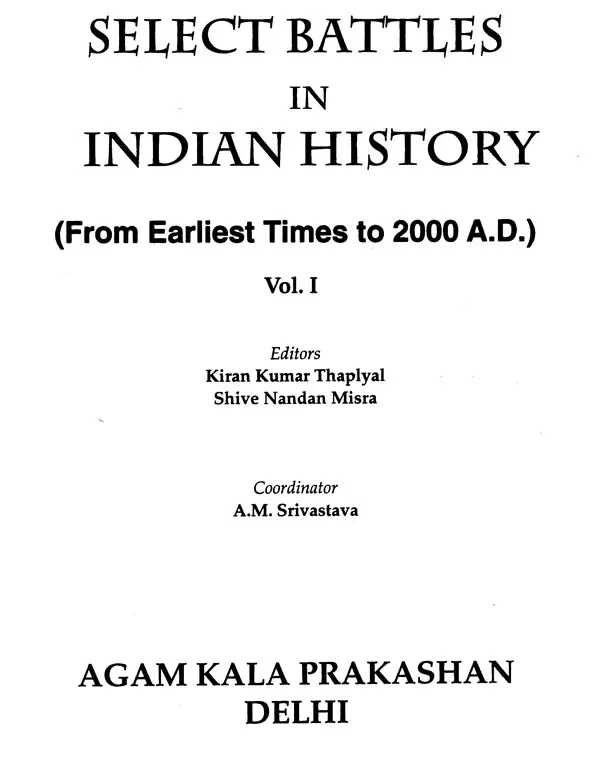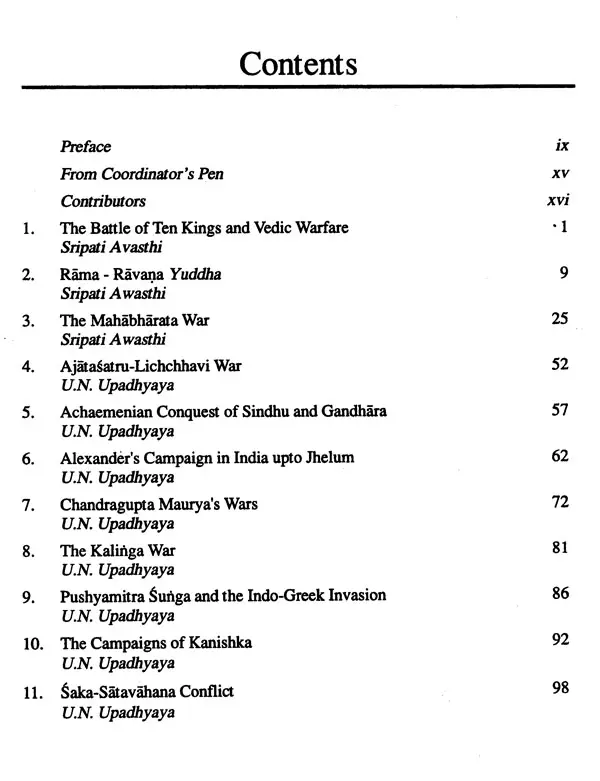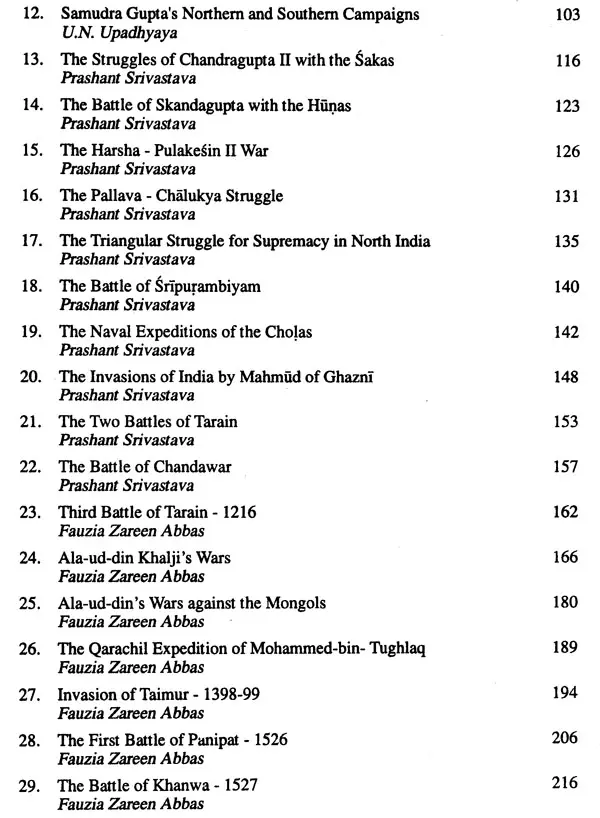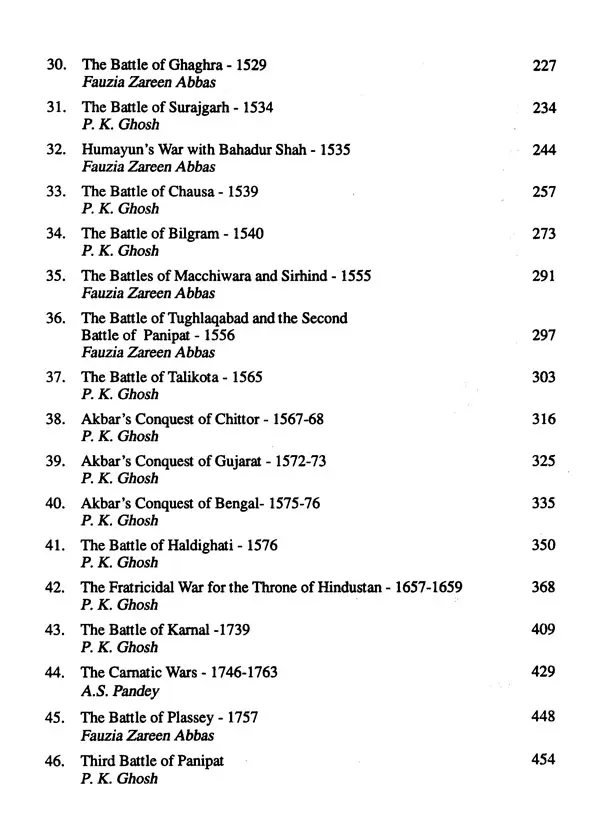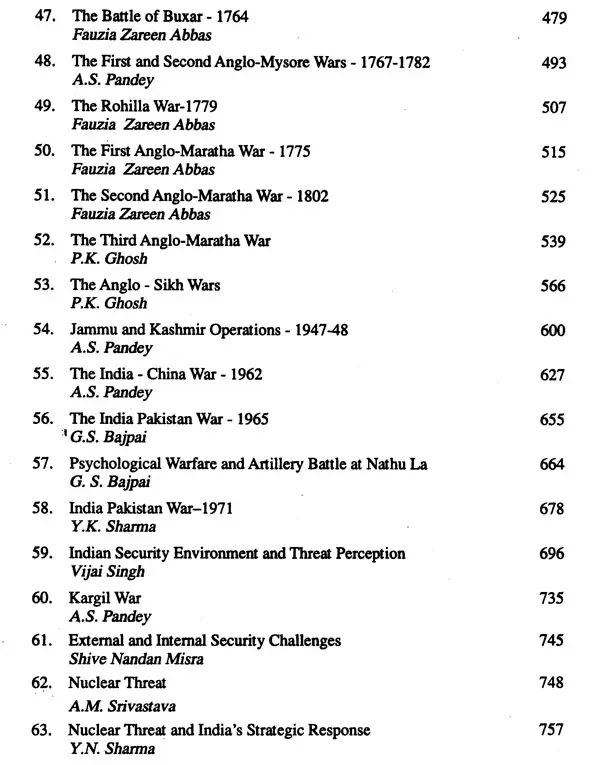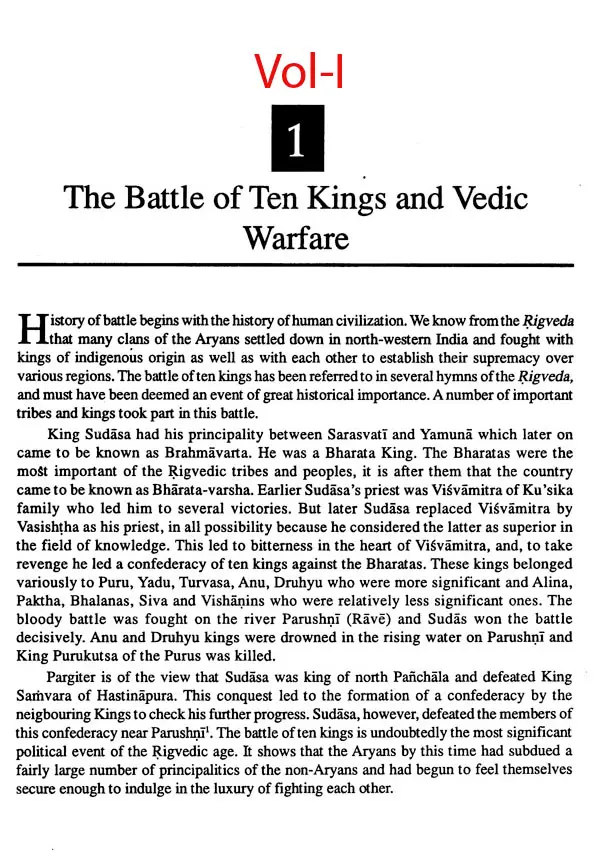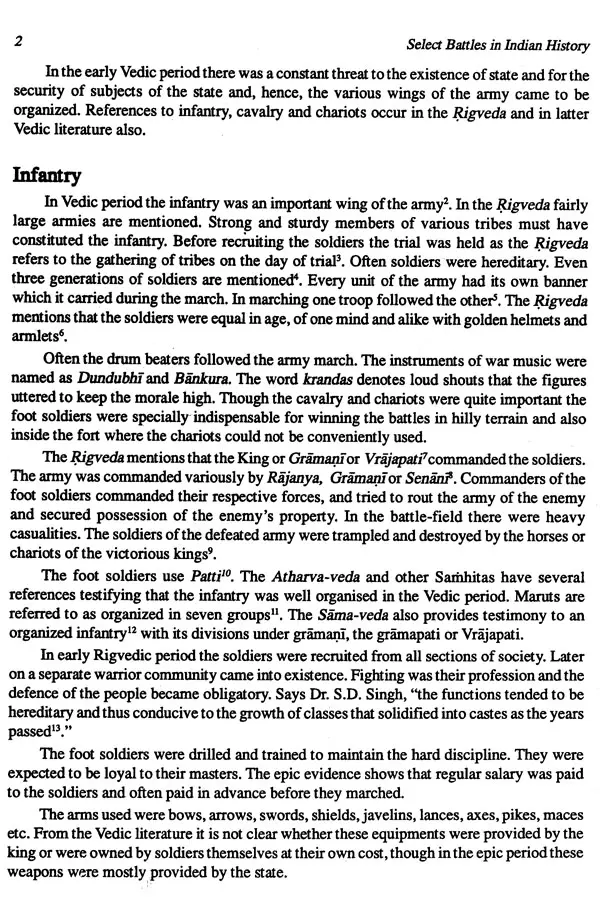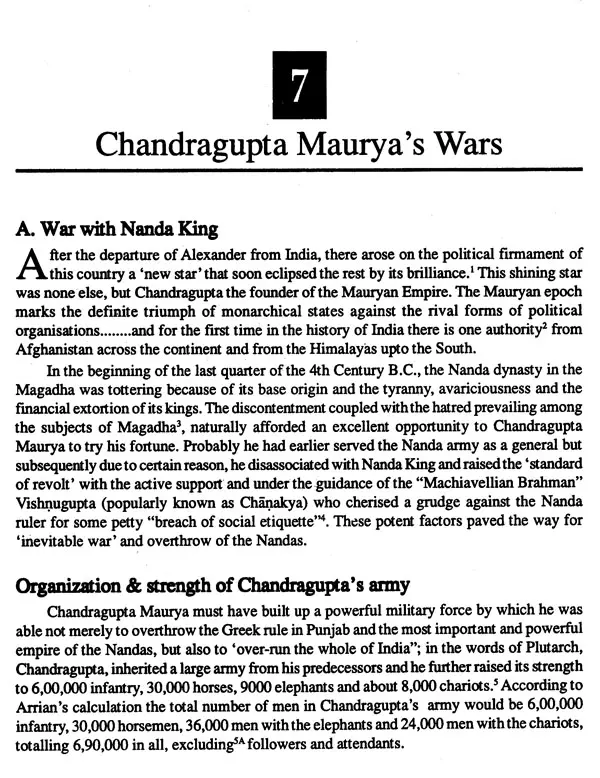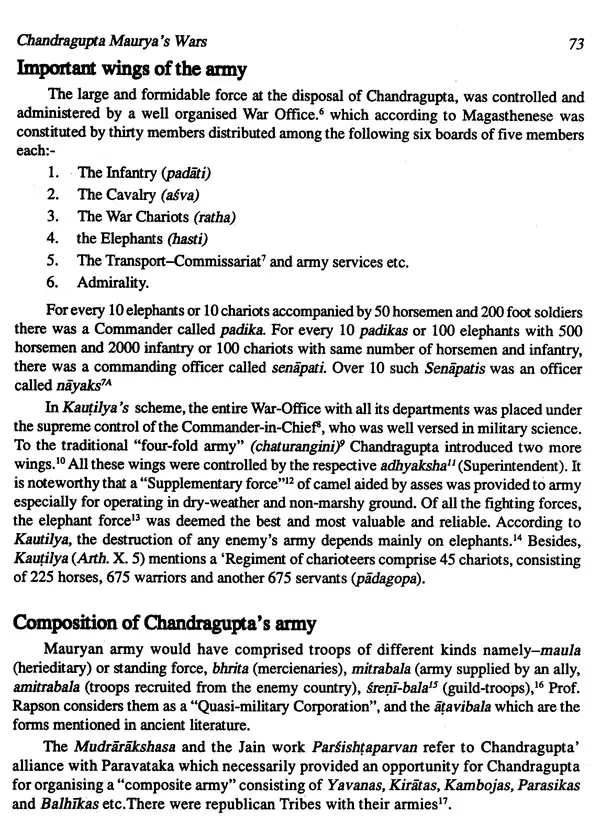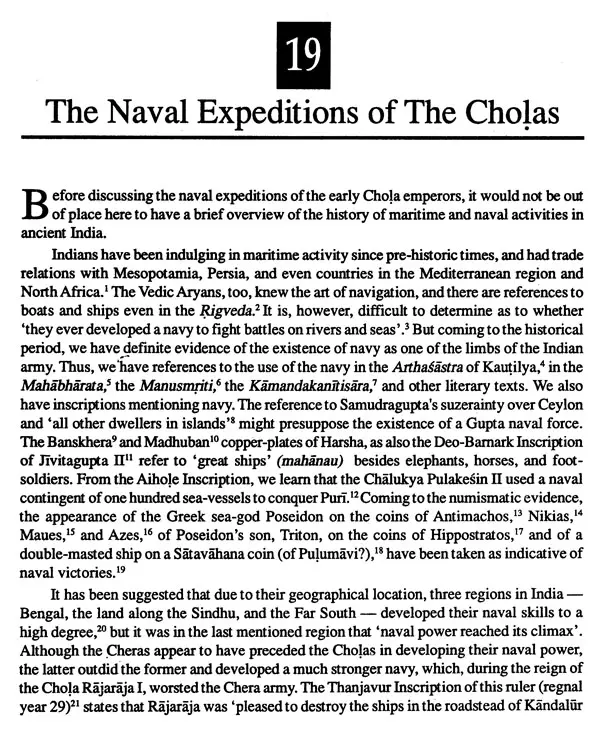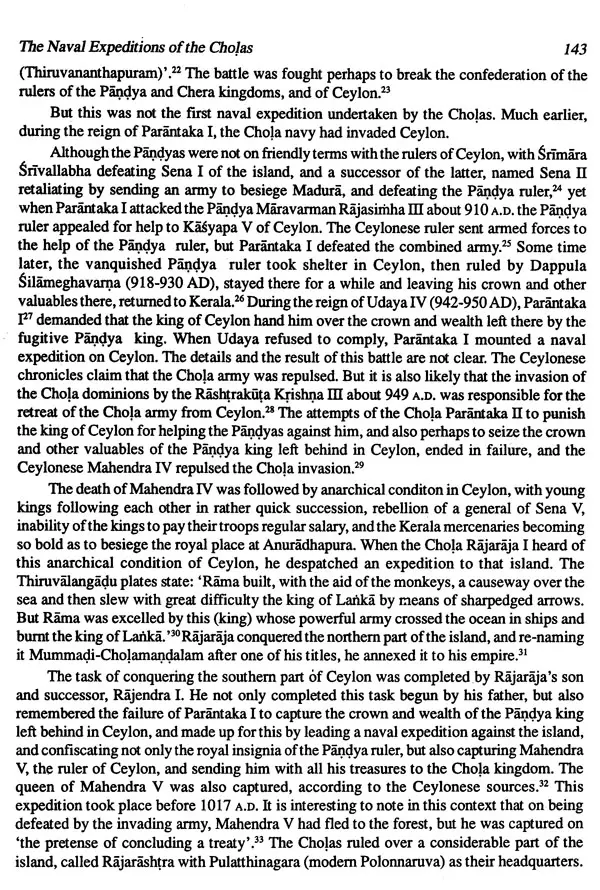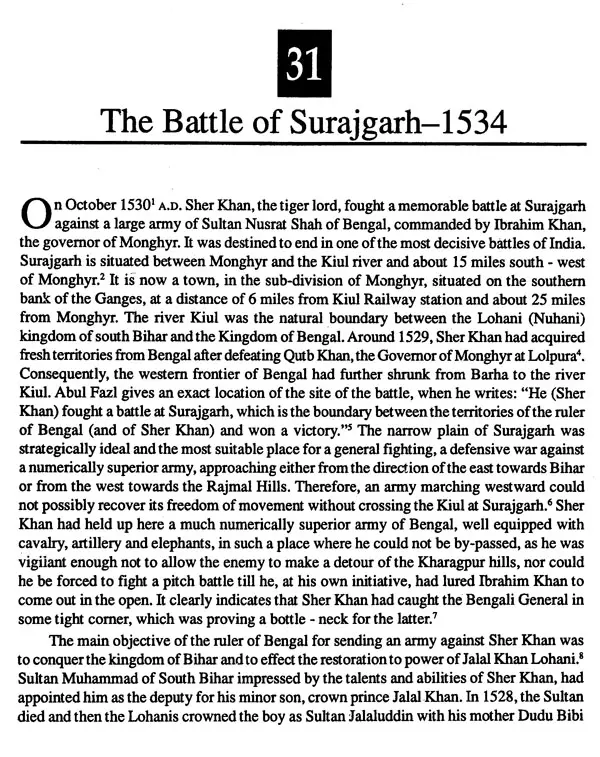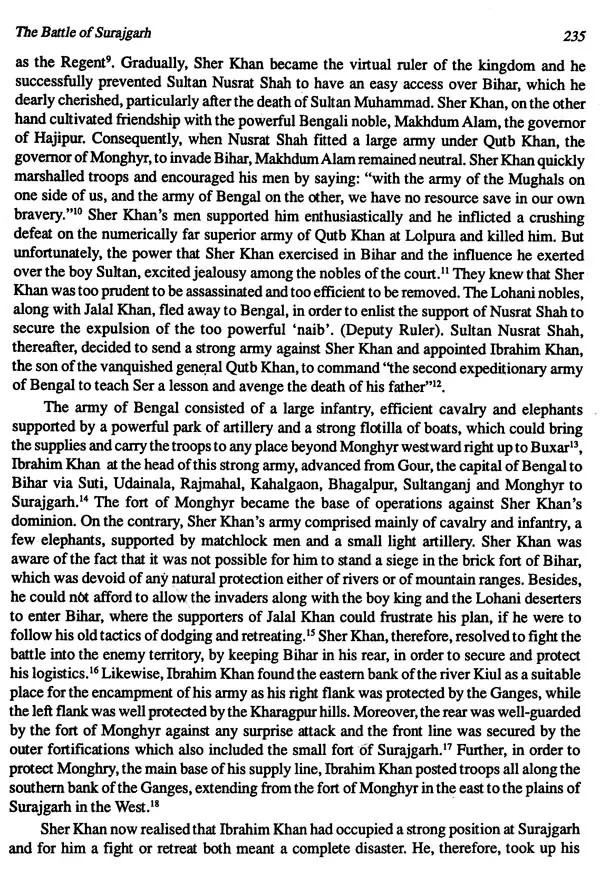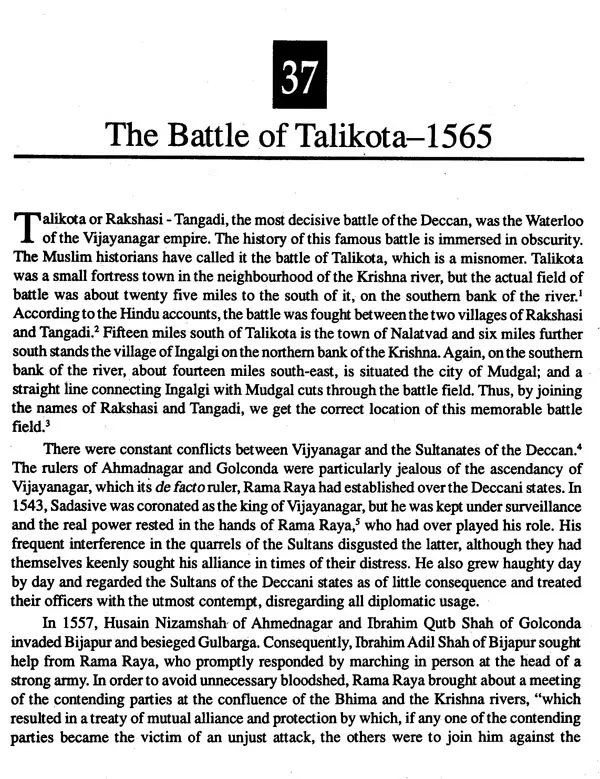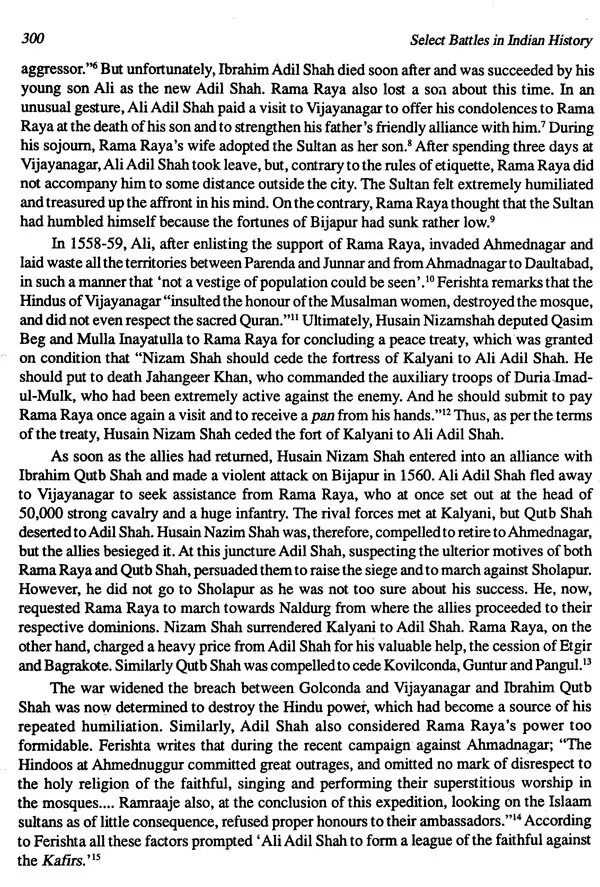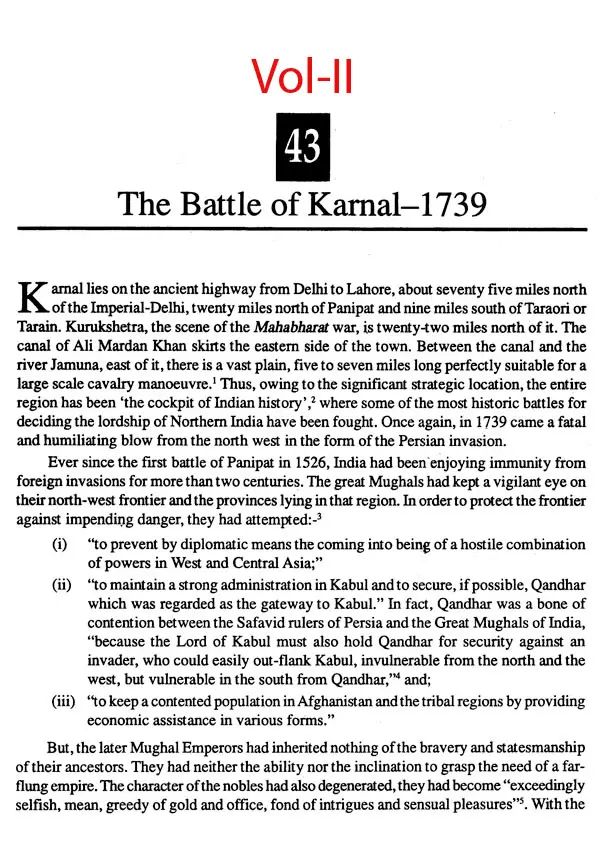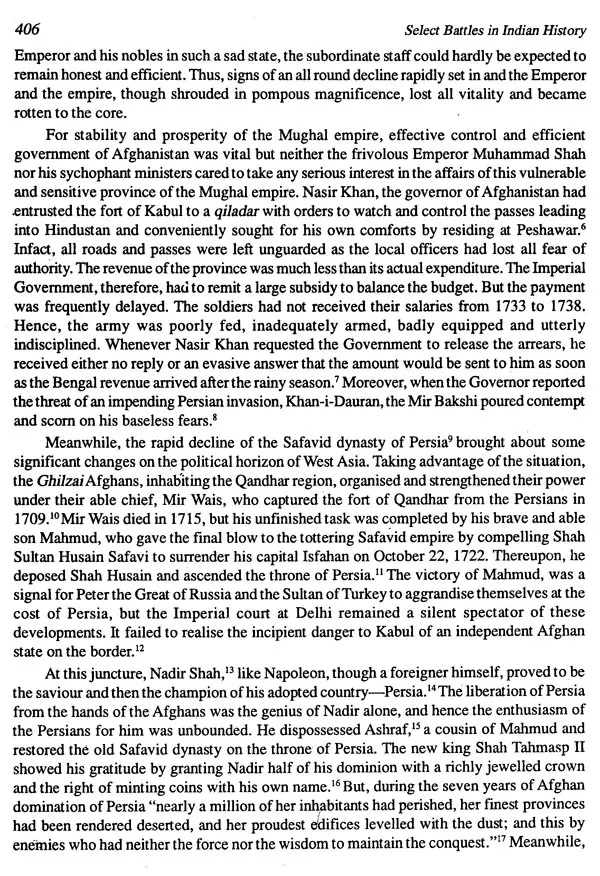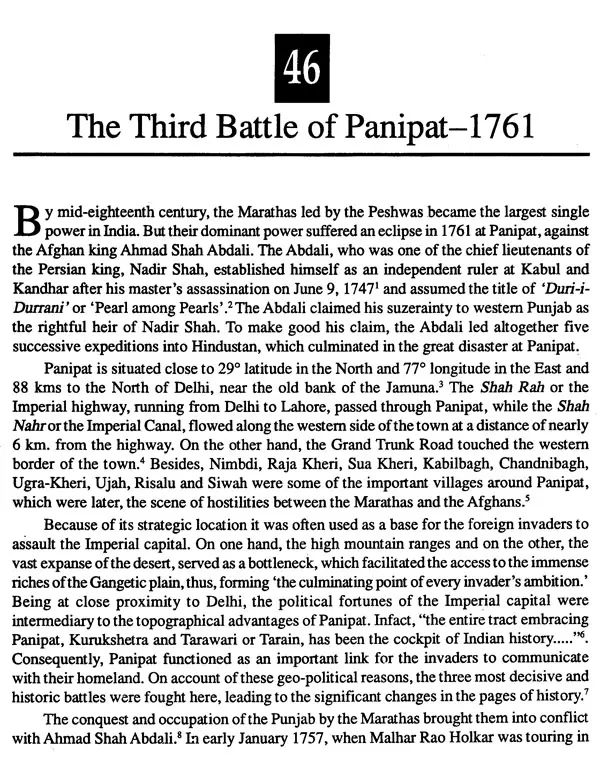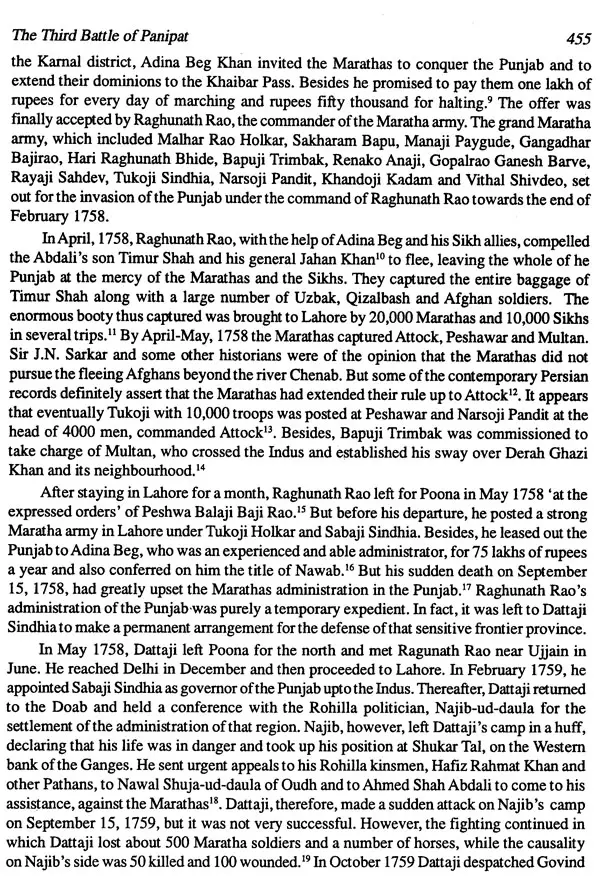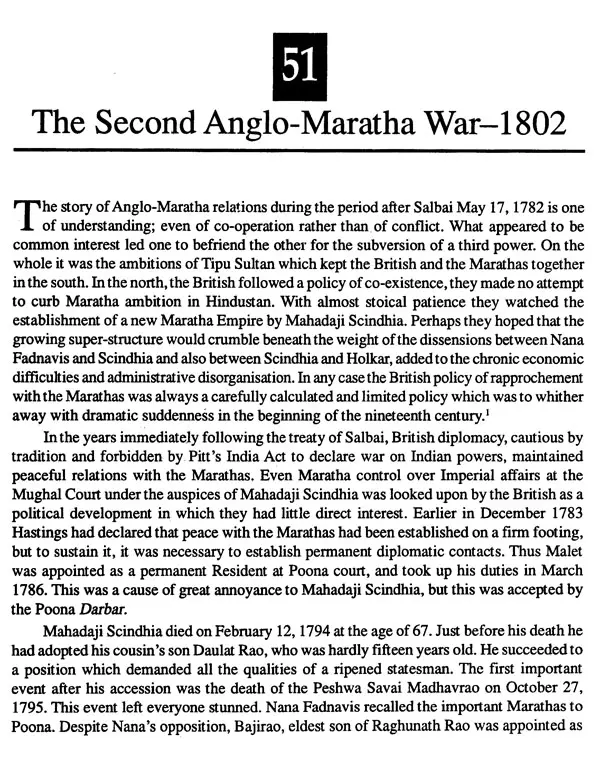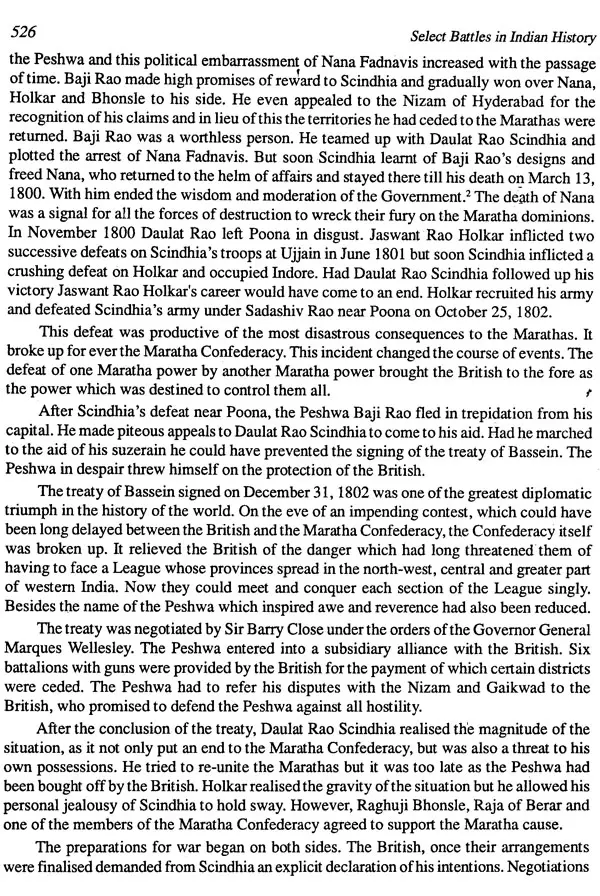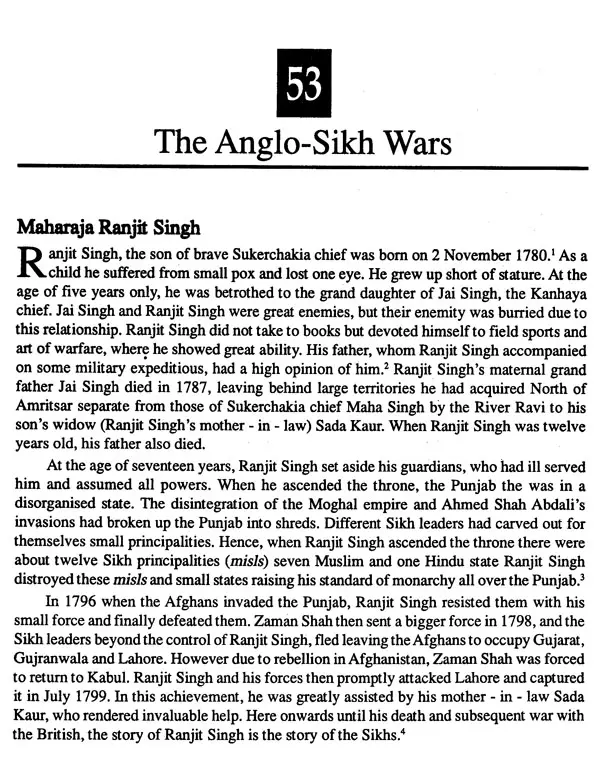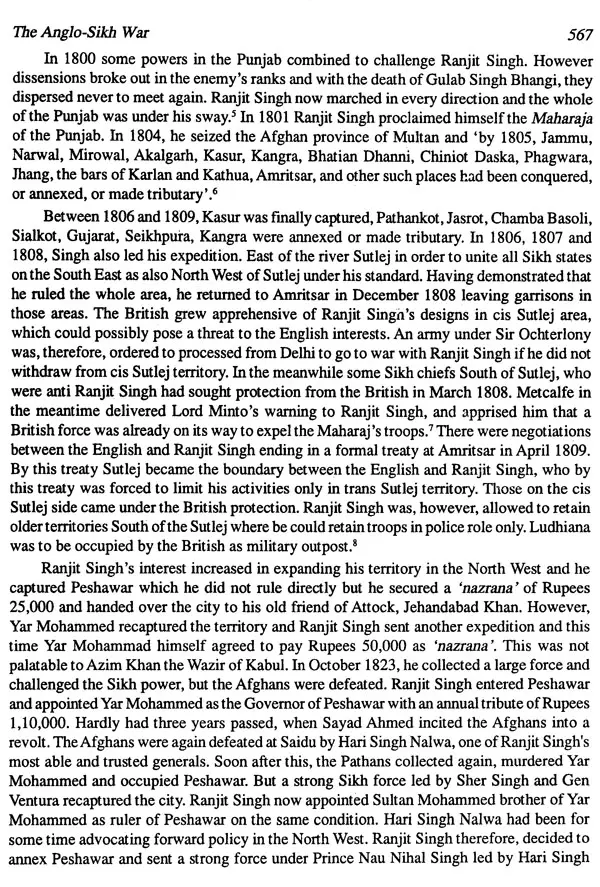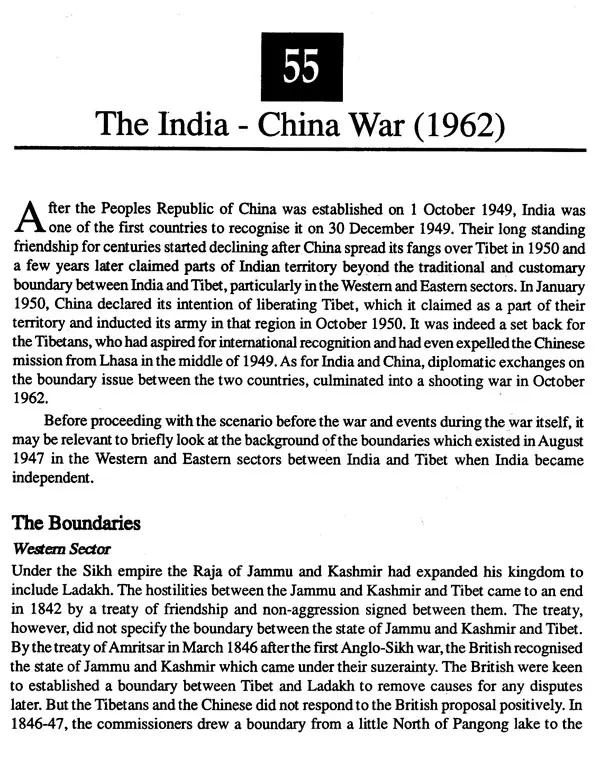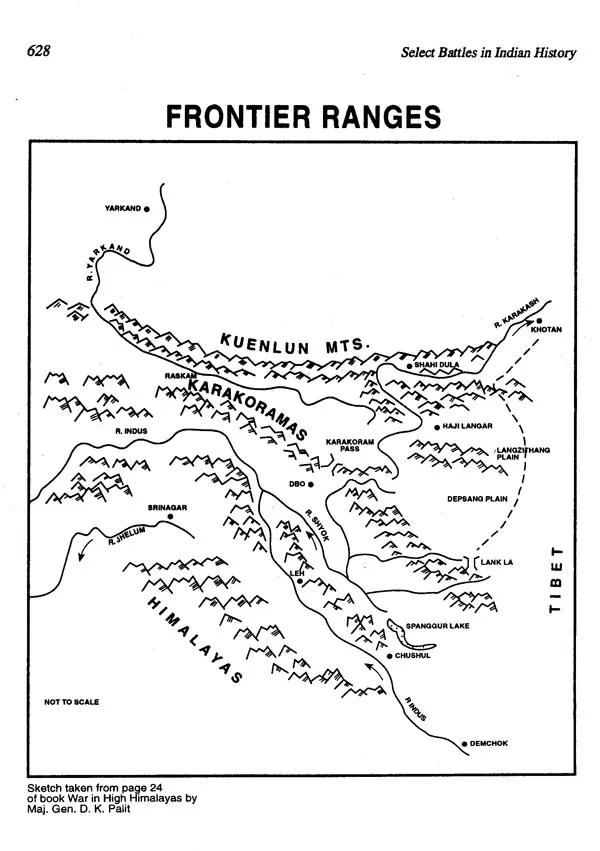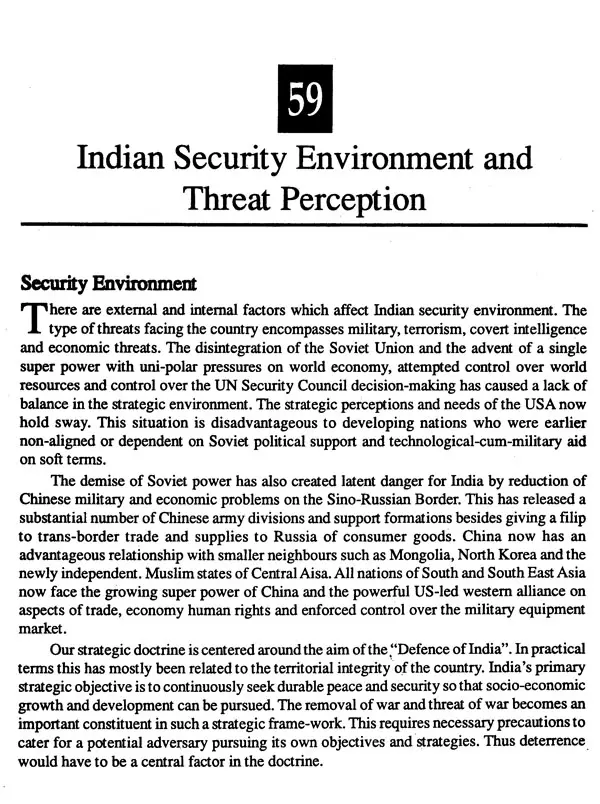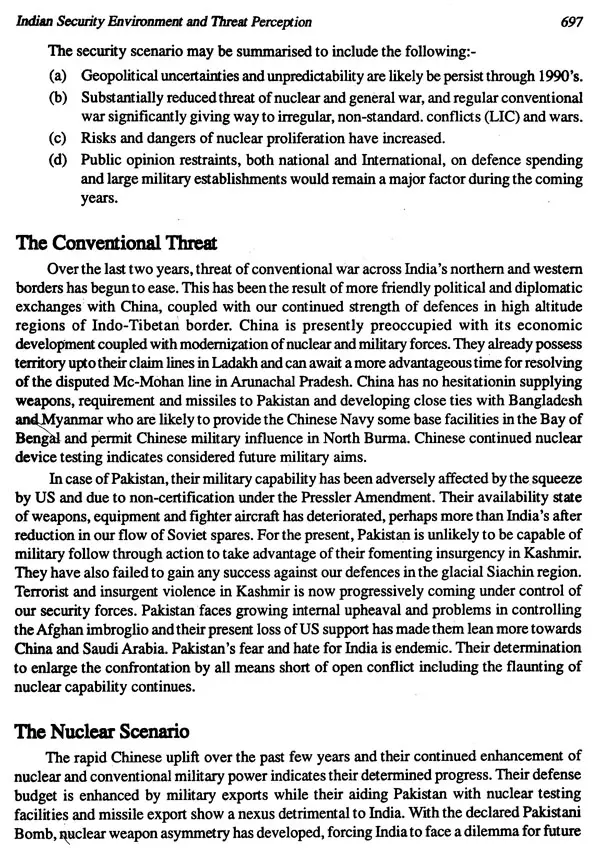
Select Battles In Indian History- From Earliest Times to 2000 A. D. (Set of 2 Volumes)
Book Specification
| Item Code: | UAO490 |
| Author: | Kiran Kumar Thaplyal and Shive Nandan Misra |
| Publisher: | Agam Kala Prakashan, Delhi |
| Language: | English |
| Edition: | 2002 |
| ISBN: | 8173200475 |
| Pages: | 763 (B/W Illustrations) |
| Cover: | HARDCOVER |
| Other Details | 10.00 X 7.50 inch |
| Weight | 1.93 kg |
Book Description
The work deals with select 59 battles and wars in Indian history from Rigvedic period to circa 2000 AD. The Rigvedic "Battle of Ten Kings' is followed by the war between Rama and Ravana described in the Ramayana, and the Bharata war detailed in the Mahabharata-the two wars that have sunk deep down into the collective consciousness of the Indian people. Alexander met tough, though unsuccessful, resistance; his conquests helped in turning the small states of Punjab into large political units. The horrors of Kalinga war turned Asoka as follower of Buddhism and a champion of peace.
The Turkish invasion of Muhammad Ghori marked the beginning of the Muslim rule in India. The Battle of Takkola resulting in the defeat of the Vijaynagara Empire at the hands 'of neighbouring Sultanates marked the destruction of chances of Hindu supremacy in the south'. In the north, the Afghans displaced the Turks. With Babur's conquest of Ibrahim Lodi and Rana Sanga in the battles of Panipat and Khanwa, respectively, the Mughal Empire was founded.
The success at the battles of Plassey and that of Buxar laid the foundation of the British Empire. Later, they met with stiff resistance in battles against the Marathas, Hyder Ali, Tipu Sultan and the Sikhs.
The first war of Independence was unsuccessful, but it paved the way for Indian Independence in 1947. The wars fought by the Indian defence forces after Independence-one against and three against Pakistan-the last being the Kargil war (1999), have been authored by army officers, then in active service.
Attempt has been made to discuss the security environment and the threat perception, in the light of Indian and Pakistani nuclear tests and the successful American war against the Taliban government.
Warfare is rooted in human nature and it has been co-existent with the history of mankind. Domination over others, acquisition of territory and booty and defence against invaders have been the causative factors leading to war. Ideological and religious sanction for, and glorification of, killing people, mostly those following different religions or doctrine or belonging to different ethnicity has also been responsible for wars. Increasingly destructive weapons of war have been fabricated through the centuries with the development of higher skills and techniques. Beginning with tools made from stone and wood and thereafter from metals, they culminated in the present array of weapons of mass destruction stockpiled by different nations, with the potentiality of wiping out human civilization from the face of the earth. Fiercest of carnivorous animals like lions and tigers have not killed their own species in such astronomical numbers as humans have done.
Wars undoubtedly have wrought great destruction and caused immense human suffering. Nevertheless, they have contributed significantly towards the shaping of the social-cultural and socio-political lives of the people of the world and in the evolution of socio-political formations from the primitive tribal groupings to the wider and more extensive political entitles, viz, the nation states, and the supra nation state in the shape of the United Nations Organization.
India has seen many wars and battles internecine as well as those resulting from foreign invasions in the course of her long history. The present work deals with important battles and wars from Rigvedic times to 1999. The Battle of Ten Kings (No. 1, below) recounted in the Rigveda is the first recorded battle in Indian history. It was an internecine war between tribal kings of the Rigvedic period which established the hegemony of one king (viz. Sudas) over the others. Thereafter, the two wars of epic dimensions that find an important place in the history of ancient India, are the war fought by Rama against Ravana (No 2, below) as described in great detail in the Ramayana, and the Bharata war fought between the Pandavas and the Kauravas (No 3, below) which is vividly described in the Mahabharata. These two wars of yore, with their descriptions, intermixed with mythological elements, have sunk deep into the collective consciousness of the Indian people.
The earliest foreign inroad into India was that of the Achaemenians (No. 5, below) in the sixth century BC, which led to the occupation of Sindhu and Gandhara by the invaders. The records of the battles fought are too hazy. Thereafter came the invasion of Alexander, between 327 and 324 BC (No. 6, below), conquering or otherwise subduing states, both monarchical and republican, and bringing in its wake the unification of north-western India, turning them into larger political entities. This incidentally paved the way for Chandragupta Maurya to establish political unity in the country. The war waged by King Asoka against Kalinga in c. 260 BC (No S, below) was epochal and far reaching in its significance. The large scale slaughter and bloodshed in the war filled the heart of the emperor with deep remorse and he became a Buddhist. He renounced war as a means of conquest, and undertook instead to conquer the hearts of the people and thereby establish the kingdom of righteousness.
**Contents and Sample Pages**
